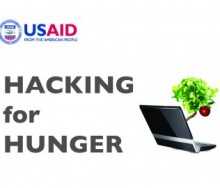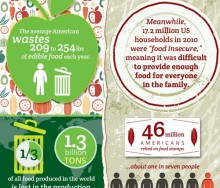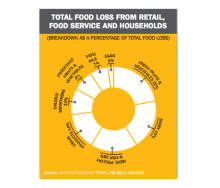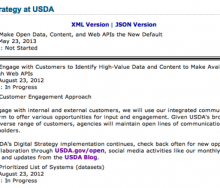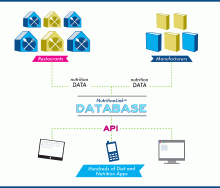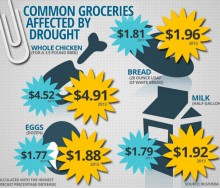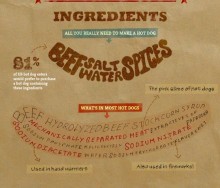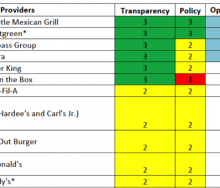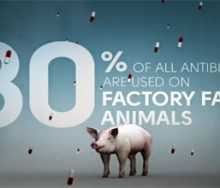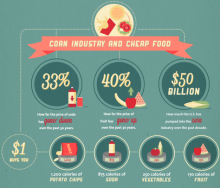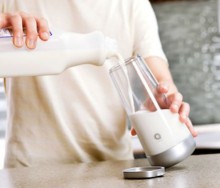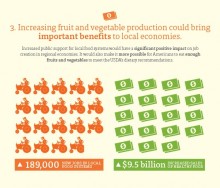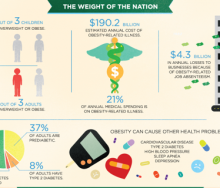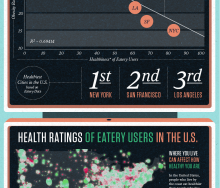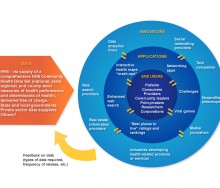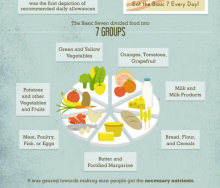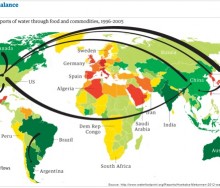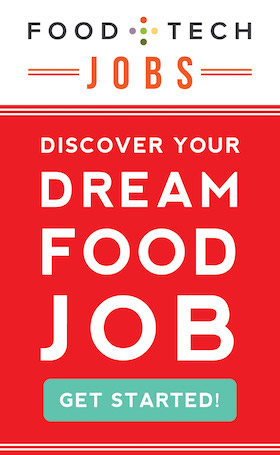Market Needs
This coming weekend, USAID is holding its first hackathon, Hacking for Hunger. It’s a chance for technologists, subject experts and others to build applications that a[...]
Three infographics break down and visualize staggering food waste data, how it relates to hunger and what consumers can do to reduce their waste. [...]
How often do you find yourself throwing away wilted greens or leftovers that have sat too long in your refrigerator? Probably a lot, according to a new NRDC report that shows the a[...]
The USDA is looking for input from the public to help determine the APIs and mobile optimized websites they should prioritize development of between now and May 23, 2013. [...]
Nutritionix is building a suite of tools that allow restaurants and food brands to organize and publish their nutritional data, thereby making it easier for consumers to interact w[...]
Consumers will likely be facing increased food prices of 4 to 5 percent in 2013 – as opposed to the average inflation of 2.5 to 3.5 percent – according to Consum[...]
Applegate Farms breaks down how Americans feel about what is in their hot dogs and what they put on them.[...]
The 5th Annual Computer Cooking Contest invites individuals, research groups and companies applying AI technologies to home cooking - such as case-based reasoning, semantic technol[...]
Congresswoman Louise Slaughter of New York released the results from a survey of over 60 fast food, retail, production and grocery companies asking them about their policies on the[...]
FixFood's Meat Without Drugs campaign breaks down how "superbugs" travel from the farm to you.
[...]
New survey results from Consumer's Union indicate that 86 percent of the consumers think meat raised without antibiotics should be available in their local supermarket.[...]
What can tweets tell us about global food consumption and its impact on emotional well-being? FoodMood is an interactive data visualization project that aims to measure global food[...]
Americans may be spending less money on food, but dollars saved are just being spent on the resulting costs of poor health that plague the nation.
[...]
The winning project of the Quirky + GE Project is Milkmaid, is a quart size glass milk jug that can sense when your milk will go bad. Milk is becoming an object of interest for tho[...]
USDA dietary guidelines recommend that 50 percent of our daily food intake should be fruits and vegetables. But there is clearly a disconnect between the guidelines and the mere 2[...]
A new report released Monday, “Accelerating Progress in Obesity Prevention: Solving the Weight of the Nation,” by the Institute of Medicine (IOM), the health group of the National[...]
Organic Trade Association forecasts for 2012 and 2013 indicate that organic food and non-food sales will continue to grow nine percent or higher annually.[...]
Massive Health visualizes their key findings about when, where, what and who people eat with.[...]
Over the past 5 months, Massive Health has collected over 7.68 million food ratings from people in 50 countries. Today, they are releasing some of their key findings as a series of[...]
Red Meat Is Killing You visualizes what "pink slime' is and how it's made.[...]
ScanAvert, a mobile application that helps consumers with dietary restrictions to choose safe groceries is much more than a mobile grocery advisor, allowing users to find and track[...]
Just Label It, a campaign advocating for the labeling of genetically engineered (GE) foods, created the following infographic to illustrate why GE foods should be labeled.[...]
This June 5, the best and brightest of the food tech community are being invited to showcase your work at the third annual Health Data Palooza. Hosted by The Health Health Data In[...]
This week's infographic is an interesting visual timeline of USDA Food Guidelines, including commentary about the problems associated with each version of the guideline.[...]
A new report on the "water footprint of humanity" from scientists at the University of Twente analyzes and maps global water use from 1996 to 2005. According to the study, agricu[...]
18 Feb 2025
, 0 Comment
17 Dec 2024
, 0 Comment
Copyright © 2015
Food+Tech Connect. All Rights Reserved. Made in New York.

